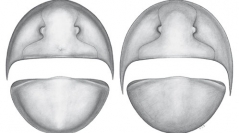

 Geodiversitas
37 (2) - Pages 131-150
Geodiversitas
37 (2) - Pages 131-150Asaphellus Callaway, 1877 is the earliest widespread genus of the family Asaphidae Burmeister, 1843, and although its systematics bears several problematic issues, an input to overcome these difficulties has been attempted. Our main focus is a group of strongly effaced Asaphellus species from the Cordillera Oriental (NW Argentina), including new material from the Santa Rosita Formation (Furongian-Tremadocian), mainly belonging to Alfarcito and Rupasca members (Quebrada del Arenal, Perchel, Jujuy Province). Asaphellus is reconsidered herein in order to restrict some features and discuss others not taken in account before. Moreover, several problematic Argentinean species are revised. The poorly known, but extensively cited, A. catamarcensis Kobayashi, 1935 is assessed here upon the type series in order to clarify its taxonomy and previous assignments. A reappraisal of A. stenorhachis (Harrington, 1938), another enduring problematic taxon, is proposed. Besides, A. isabelae n. sp., a unique species within the genus mainly due to its extreme effacement is defined herein. Other species left in open nomenclature are also described. Regarding local random occurrences in the Furongian, the genus radiated locally from the early Tremadocian (Tr1) onwards, however, taxonomic diversification was not mirrored by the abundance of Asaphellus in local communities. From the middle Tremadocian (Tr2) this diversification is associated with an increase in abundance, and even dominance of the taxon in numerous assemblages, further expanding its environmental range into shallower settings. The increase of Asaphellus diversity (Tr1- early Tr2) is decoupled from the records of local increase in Asaphidae diversity since the late Tremadocian (Tr3) and Floian, underscoring the complex pattern of diversification at different taxonomic levels.
Asaphidae, Asaphellus, Trilobites, Tremadocian, Argentina, new species